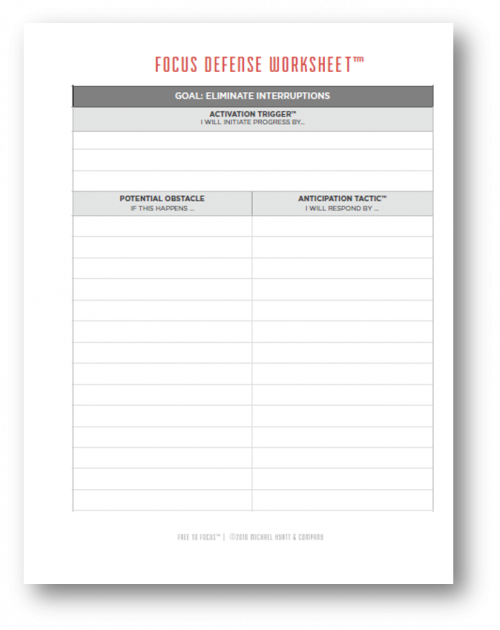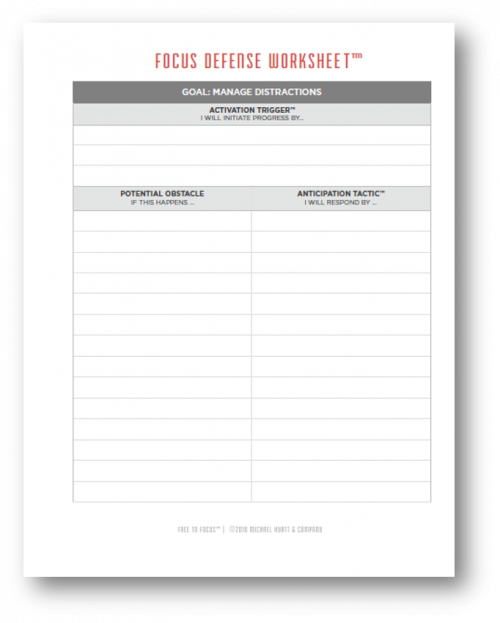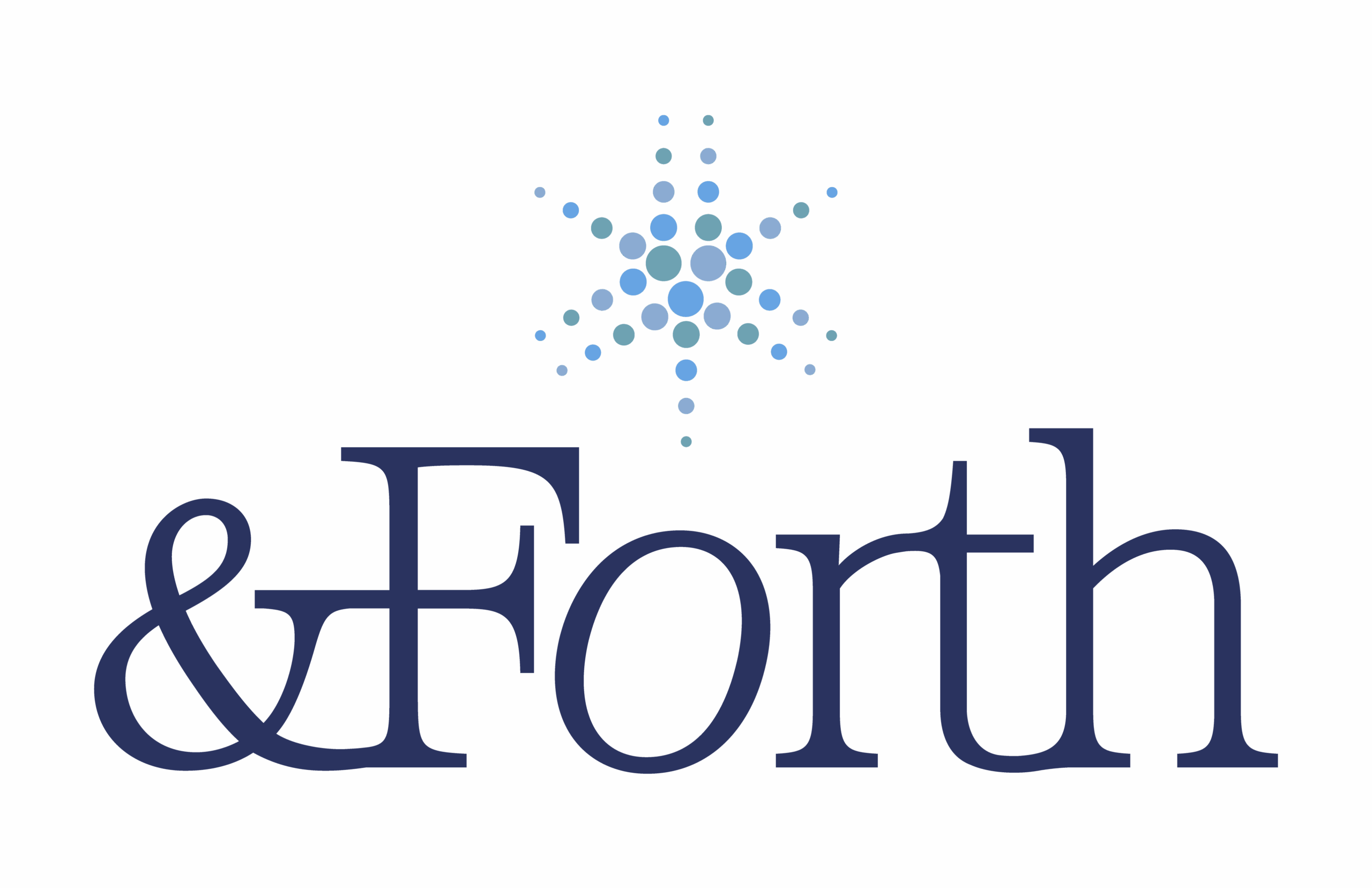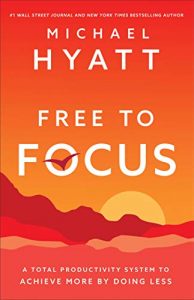Activate: Beat Interruptions and Distractions, page 205.
- We live under a barrage of messages and inputs.
- The trend towards open-concept offices and cubical farms has worsened this situation for some.
- What we supposedly gain in collaboration and cost savings, we lose in concentration.
- The Distraction Economy wants nothing more than to take our minds off what we need to do today.
- Every ping that pulls our eyes away and every notification we take note of subtracts from our productive value and gives it to someone else.
Interruptions: Breaking In
- Interruptions represent an external input that breaks your concentration. Often, they’re drop-in visits, phone calls, emails, or team messages that pull us away from the work we’re supposed to be doing.
- These are more than mere annoyances. They’re cancers gnawing at meaningful work.
- Two actions can help you create a virtual isolator to help you maximize your productivity:
- Limit Instant Communication.
- Proactively Set and Enforce Boundaries.
Limit Instant Communication
- We have confused speed with importance.
- This mistake has amplified the pace of our communication and the number of our interruptions.
- You can’t delve into extended periods of meaningful work if you’re constantly shifting your focus when one of seventeen apps or devices alerts you about an incoming message, comment, tag, or desired action.
- A study by Hewlett Packard and the University of London found that when we divert our attention to incoming calls and messages, it dings our IQ by 10 percent.
- The only answer is to opt for delayed communication whenever possible.
- Turning off notifications is a critical part of limiting instant communication.
- By limiting your instant communication, you’ll experience less stress, more focus, and periods of deep work that will move the needle on your most important tasks and projects.
Proactively Set and Enforce Boundaries
- By opting for delayed communication, you’re limiting others’ access to you.
- The trick is to proactively set their expectations by letting them know.
- Inform relevant people you’re going to be offline for a period to focus.
- Don’t wait for them to come find you; tell them in advance. Proactively communicating about your availability puts you in charge.
- An open-door policy sounds nice, but you’ll never get any meaningful work done.
- Warning: people will not respect your boundaries if you don’t.
Distractions: Busting Out
- While an interruption is an external force that demands our attention, a distraction is anything internal that disables or destroys concentration.
- We are usually our own worst enemy.
- When we are bored or when the work we’re doing is especially tough, we escape.
- Every time we bounce off task, we train our brains to become even more distracted and shorten our attention spans.
- We are our own disturbers more than 50% of the time.
- We can blame all the noise and stimuli out there – or we can take the necessary responsibility to change our behavior by proactively fighting interruptions and distractions.
Focus Tactics
- If we want to get free to focus, we need tactics to help us regain, retain, and ultimately retrain our focus.
- You’re already getting enough sleep (chap. 3) and disengaging from instant communication. Both of those help. Here are some additional suggestions:
- Use technology to manage technology.
- Listen to the right music.
- Optimize your current workspace for focus.
- Declutter your workspace:
- Refers to both physical and digital workspace.
- When your environment is cluttered, the chaos restricts your ability to focus.
- Clutter also limits your brain’s ability to process information as well as you do in an uncluttered, organized, and serene environment.
- Increase your frustration tolerance:
- The longer you can sit with the challenge of important, yet difficult, tasks – and the difficult emotions that come with them – the more effective you’ll be and the more likely you’ll be to finish your projects and achieve your goals.
- The first step is to notice when the impulse to bail comes. If you notice it, you can choose to ignore it.
- The more you choose to stick with the difficult task, the stronger your frustration tolerance will become.
- You’re training yourself to focus.
- How do you notice? Few things work as well as cultivating mindfulness.
No Isolator Needed
- Taking charge of your day may not only be challenging; it can be terrifying.
- If all you’ve ever known is jumping from one fire to another all day, the idea of cutting yourself off from interruptions may leave you to wonder, “Who will put out all those fires if I don’t?”
- I’ve learned over the years that high achievers become the go-to problem-solvers for everyone around them.
- As we all know, fixing someone else’s problem practically guarantees they’ll bring you more problems in the future.
- If you want to become free to focus, you can’t spend your whole day working on someone else’s priorities.
Exercise: A Plan to Minimize Disruptions
- It’s time to use the strategies and practices in this chapter to develop your action plan for minimizing disruptions in your day.
- Download a copy of your Focus Defense Worksheet at FreeToFocus.com/tools.
- Your first goal is to eliminate interruptions. Practice the following:
- Start by creating an Activation Trigger. This is just a simple reminder of your intention.
- It could be something like hanging a Do Not Disturb sign on your door.
- Next, list obstacles you think could get in your way.
- Then predetermine your response – your Anticipation Tactic.
- Repeat this same process for distractions.



